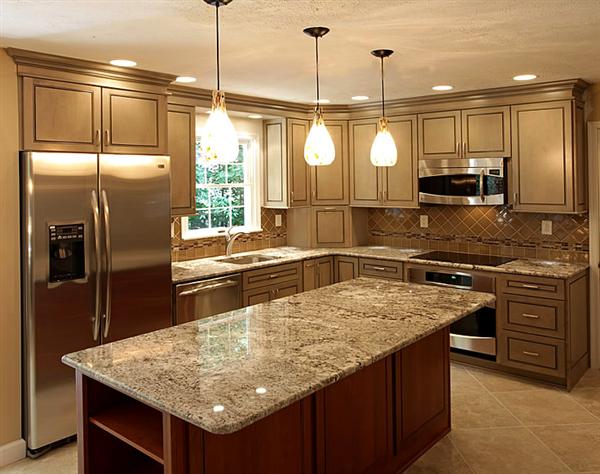Kitchen lighting must give good, safe illumination for work areas and comfortable ambient lighting for the main part of the room, and be flexible enough to cope with a variety of dining situations.
Lighting has the power to make or break your kitchen design – get it right, and the space will be safe and easy to cook in, as well as a welcoming place in which to entertain family and friends. When you start to plan a scheme, take stock of the lighting that is already in existence. Make notes about where it falls short, which lights need to be moved or added, and what style of lighting you would like to install. This is also the moment to make sure your electrical wiring is in a good state and decide whether it would be more helpful to have more electrical sockets. Before any major work begins, employ the services of a lighting engineer to check the system and confirm that it is safe.
The importance of good functional lighting, or task lighting, cannot be overestimated. The kitchen is full of potential hazards – sharp knives, hot water, and heavy pans, to name but a few – and it is the site of more accidents than any other room in the home. Task lighting should provide the counters with high levels of illumination, considerably brighter than those elsewhere in the room, and be positioned to make sure people cooking or preparing food are not standing in their own shadows.
To achieve the most satisfactory results, artificial light falling on work surfaces should come from just above and slightly in front of the person preparing food. Light fixtures should be attached either on the wall or below the cabinets. The same advice is true for stovetops and sinks. Make sure these fixtures and appliances are lit from above, so you can chop, cook, and wash dishes in absolute safety.
It is also an advantage to install functional lights that are on a separate circuit from the main room lights so they can be dimmed or turned off altogether when they are not needed.
In common with all good lighting plans, a scheme for a kitchen or a cooking area in an open-plan space incorporates a variety of types of fixture, including task lights for working areas and general ambient lighting.
Controls such as dimmers make it possible to transform the mood of a room from cheerful and energizing brightness that might be desirable in the early morning to the softer, altogether more laidback and restful style of lighting more appropriate for the end of the day.
Recent innovations also make it possible to install control boards for preprogrammed lighting that can be operated by the simple flick of a switch. To achieve the flexibility and effects you desire, you will probably need to incorporate a mixture of lighting types.
Crisp, sparkling-white halogen lights are the most popular choices of illumination for a kitchen. They are ideal for use in track systems and are also increasingly chosen as spotlights to highlight particular features of a room. Fluorescent tubes are most frequently employed as countertop lighting fixtures and are just beneath the wall cabinets. The quality of light given out by fluorescent tubes, which used to be bleak and harsh, has improved beyond recognition in recent years.
An alternative to the fluorescent tube is the tungsten tube, which gives a lovely, soft, creamy-colored light. Then there is the trusty tungsten light bulb- useful in hanging lights suspended over tables and for large spotlights.
Finally, don’t forget the humble, old fashioned candle – it’s gentle flattering light never fails to improve the ambience at the dinner table.
Ambient lighting creates a general wash of illumination that helps to shape the space. This is most often provided by a central hanging light, wall lights, or a ceiling track that can be angled to direct light across the ceiling or down walls and doors. Decorative lighting also offers a host of options. Strings of colored bulbs and Christmas tree lights can look wonderful and add a touch of irreverence in a kitchen. Spotlights can also be effectively used to highlight a painting or some interesting architectural detailing. Another bright idea is to use tube lighting along the top of wall cabinets so the light washes up and over the ceiling, introducing a soft diffused illumination.
You might like to incorporate other unusual and useful ideas – for example, while we all take it for granted that there is a light inside a refrigerator, we rarely put a light in a food cupboard. Consider installing small lights that are activated when you open the doors inside cabinets. Glass-fronted cabinets look stunning lit up from the inside.
Traci Brooks is an interior design and rennovations consultant. She recently took part in a seminar for kitchen and bathfroom re-designs for Cold Spring Harbor Homes For Sale.

